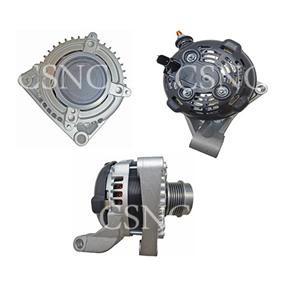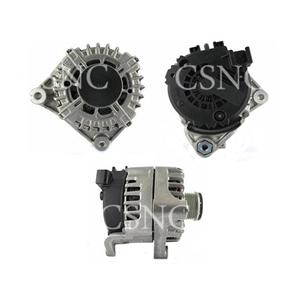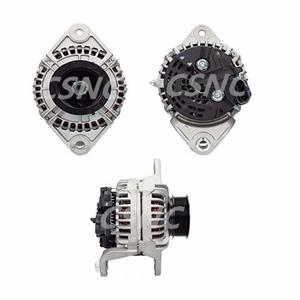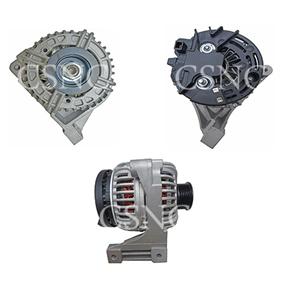How does an alternator work
What gives a headlight their lights? What gives a radio its music? And what gives the precious heater (especially at this time of year) its heat?
To most people, the answer to all of the questions above would be the car battery. Well, most people would be wrong.
The truth is that the car battery only has one role: start the engine. Once the engine fires, the alternator takes over and provides electricity for everything in your vehicle.
You see, while a car battery is great at holding and storing energy for that initial spark of electricity needed to start the engine, it only has enough energy to power the vehicle for a short period of time (5-10 minutes depending on the battery quality).
This is where the alternator steps in. The alternator converts mechanical energy into electrical energy through a process known as alternating current. As the electrical generator of your vehicle, the alternator charges the car battery while simultaneously operating all the electrical components of the vehicle.
TL: DR - Alternators
A good way to understand the role of an alternator is to imagine a car battery. Instead of believing the car battery powers your car, believe the alternator is the real hero that provides the music, heat and light you know and love.
Alternator Jargon
Before we start getting into the mechanics of how an alternator operates, we think it’s important to clarify some of the car jargon you may stumble upon when reading this article. Refer back to this list further on in the article, if you need to.
Voltage regulator
- A voltage regulator is an electronic device that maintains the voltage of a power source within acceptable limits. In an alternator, a voltage regulator is used to regulate DC voltages
Stator
- A nest of copper wires that converts a rotating magnetic field into electrical energy
Rotor
- The rotor is a moving component of an electromagnetic system that is basically made up of a group of magnets
Diode
- The diode is a semiconductor device that converts AC to DC current
AC Current
- Alternating current describes the flow of charge that changes direction periodically. As a result, the voltage level also reverses along with the current. AC is used to deliver power to houses, office buildings, etc.
DC Current
- Direct current is a bit easier to understand than alternating current. Rather than oscillating back and forth, DC provides a constant voltage or current. DC current is used in battery powered equipment like torches, TV controls and remote control cars.
Alternator Belt
- The alternator belt, also known as the serpentine belt, drives multiple devices in the engine. This includes the alternator.
How Does an Alternator Actually Work?
Now that you understand some of the jargon used when discussing alternators, you can now get a thorough understanding of how this all works together. Below we’ve listed the … steps to operating an alternator. Remember to refer back to the alternator jargon buster if you need help understanding the terms used in this article.
Step 1 - Alternator Belt
When the ignition is engaged the car battery sends an electrical signal to the starter motor that starts the process of firing the engine. At the same, the alternator belt (serpentine belt) is activated. The alternator belt then goes on to spin a small pulley on the alternator.
Step 2 - Rotor
When the small pulley is spun by the alternator belt this, in turn, spins the rotor (a group of magnets).
Step 3 - Stator
The spinning of the rotor at high speeds (40 rotations per second) creates electricity in the stator (nest of copper wires) through the process of electromagnetism.
Step 4 - Diode
The electricity created by the Rotor and the Stator is harvested by the diode. This small semiconductor then converts the current from AC to DC.
Step 5 - Voltage Regulator
The next step involves the voltage regulator. This is a device attached to the alternator that monitors the voltage flowing around the car and to the car battery. If the voltage goes above a certain level the regulator will shut off the flow to the battery. The battery will then be drained of electricity and the current will then be allowed to flow back. This cycle continues on and one throughout the journey of the vehicle.




